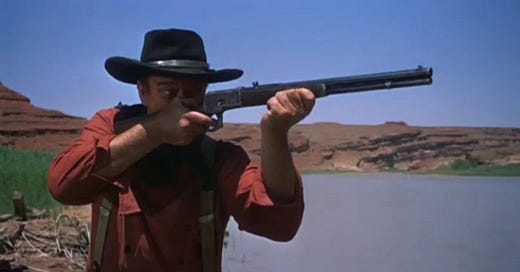Why The Beatles owe their success to Comanche Indians
The most powerful Indian tribe in American history
The Searchers was a huge film, starring John Wayne and directed by John Ford, was named the greatest American Western by the AFI in 2008 and came in 12th on their list of the 100 greatest movies of all time.
Set in the Llano Estacado of Texas and New Mexico, in the heart of Comancheria, it was filmed primarily in the Monument Valley of Arizona and Utah.
Shot in the relatively new VistaVision process, using 35mm film, the landscape shots are remarkable. The style influenced the filmmaking of David Lean with Lawrence of Arabia and a number of scenes went on to inform several iconic Star Wars movies.
Director Ford requested and was granted a first-of-its-kind “making of” documentary to be filmed while the movie was in production. Eventually, the finished program aired on television as a promotional vehicle for the movie itself.
Let’s also be clear that the tender 21st Century populace was not the…
Keep reading with a 7-day free trial
Subscribe to The O'Leary Review with Brian D. O'Leary to keep reading this post and get 7 days of free access to the full post archives.





